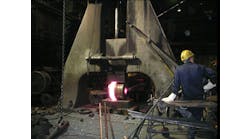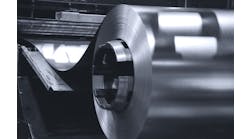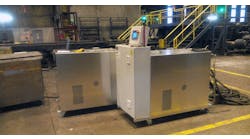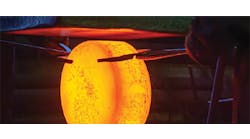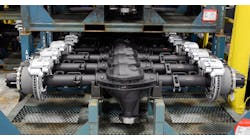It’s been tough sledding recently for Alcoa Inc. The aluminum giant reported a quarterly loss of $1.19 billion on January 26, just days after it announced cutbacks due to sinking prices and declining demand for its products amid the global economic slowdown.
"The aluminum industry is caught up in a perfect storm of historic proportions," Klaus Kleinfeld, Alcoa's president and chief executive, said in a conference call. "The price has never before fallen so fast. As demand disappears, inventories are building and prices are decreasing." During the fourth quarter of 2007, Alcoa posted a profit of $632 million. One year later, the world's third-largest aluminum company posted a loss of $1.2 billion.
The announcement about the company's first loss in six years followed an earlier announcement of 13,500 job cuts worldwide.
"By moving quickly to address the market decline, we are using Alcoa's strategic flexibility and solid liquidity to address the continuing economic uncertainty and emerge even stronger when the economy recovers," Kleinfeld said. Alcoa said it expected to save $450 million annually as a result of the cutbacks.
Company officials said its problems are related to supply and demand: sales are down 19% and Alcoa inventory is up. "The aluminum industry is caught up in a perfect storm of historic proportions," Kleinfeld said. "The price has never before fallen so fast. As demand disappears, inventories are building and prices are decreasing." The company said the results were driven by a 35 percent price decline in the quarter -- a 56% decline from July -- and sharply lower demand, particularly from the automotive, commercial transportation, and building and construction sectors.
In a related development reported by the Cleveland Plain Dealer on January 30, union officials representing workers at Alcoa Forged and Cast Products accused the company of using a problem with a giant forging press as a bargaining wedge to gain concessions from workers there. The facility’s 50,000-ton press was shut down several months ago when officials discovered cracks in its lower base. Cost estimates for repairing the press reportedly total $68 million. The press had been used to make parts for the F-35 Joint Strike Fighter jet under a contract the company signed with Lockheed Martin in 2007.
The union’s concerns came to public attention when Cleveland Democratic Rep. Dennis Kucinich teamed with House Defense Appropriations Subcommittee Chairman John Murtha of Pennsylvania to write Alcoa a letter urging compromise. The letter from Kucinich and Murtha stated that even though Lockheed Martin and Ohio have offered Alcoa incentives to fix the inoperable press, the company has asked the union to agree to a four-year wage freeze, to a doubling of out-of-pocket health-care costs for employees, to contract language that would undermine the union's right to strike, and to a benefit freeze for new hires.
In the Plain Dealer report, Kevin Lowery, Alcoa's director of corporate communications, says the plant has kept to its work schedule on F-35 parts forgings by using a range of presses available at the Cleveland facility. "That said," he added in a phone interview, "we want to get that press back up and working, and we are looking at a number of different options to do that."
Lowery added, "We are committed to continuing the work with all the different stakeholders to find the best solution for the business, our employees and the community at large."
The Cleveland plant, which makes wheels for cars and trucks as well as some aviation uses in addition to the lightweight frame members for the F-35, reportedly laid off 100 workers January 7, including 50 salaried and 50 hourly union employees. On January 29 it said 29 more union workers lost their jobs this week and received the same contractual severance package given to the earlier dismissed workers. When Alcoa announced its cost-cutting efforts, it said it would reduce its then 104,000 global employment by 13% and end jobs for 1,700 contractors.

